VERY RARE! WWII SECRET D-Day +2 Iwo Jima Southern Sector Invasion Photograph
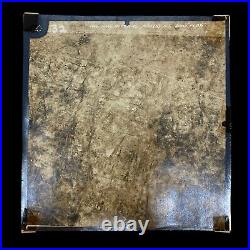
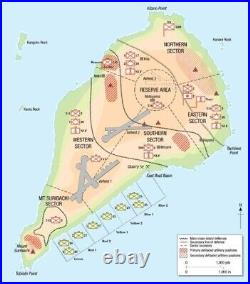
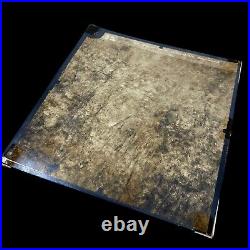
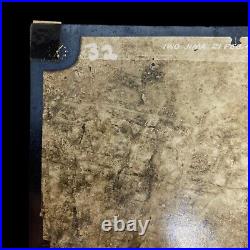

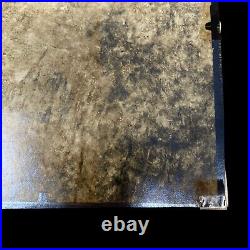
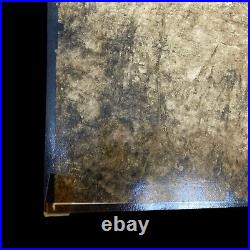
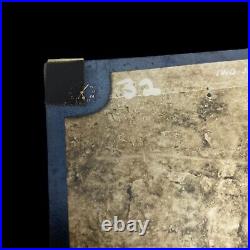
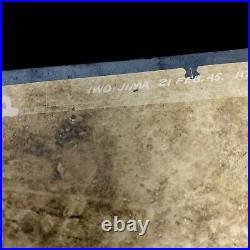
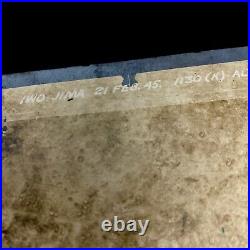
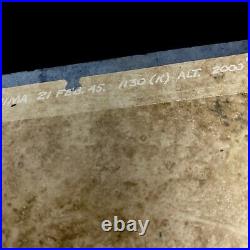
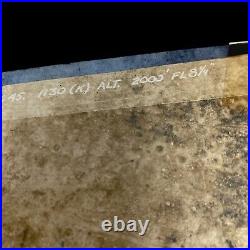

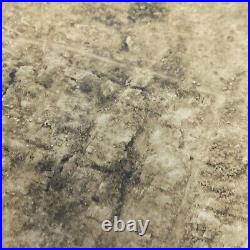
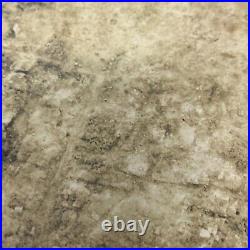



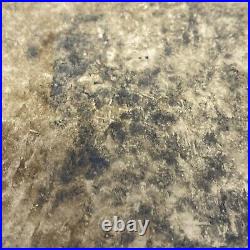
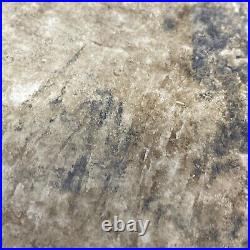
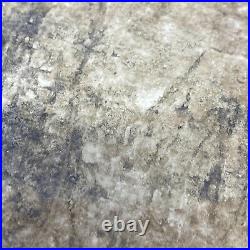
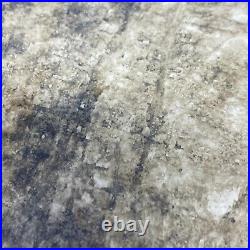
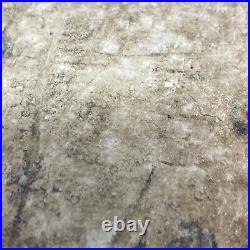

Original aerial reconnaissance photographs of Iwo Jima dating to the period of the invasion are very rare on the market. For example, a search of RareBookHub shows dozens of variations of Joe Rosenthal's iconic photograph of the flag raising on Mount Suribachi having been offered for sale, but not a single reconnaissance photo. This incredibly rare and museum-grade WWII Iwo Jima post-invasion aerial reconnaissance bombing mission photograph is only a small handful of original SECRET aerial reconnaissance photographs taken DURING the amphibious D-Day assault of Iwo Jima in February 1945. Taken on February 21st, 1945 (one D-Day +2 or two days after the intial beach head landing on Iwo Jima on February 19th, 1945) this aerial bombing raid photograph was taken during. This bombing raid photograph of Iwo Jima shows the internal section of the island and is estimated to be somewhere in the Southern Sector near Airfield No. 3 near the Northern Sector. Initial carrier raids against Iwo Jima began in June 1944. Prior to the invasion, the 8-square-mile island would suffer the longest, most intensive shelling of any Pacific island during the war. The 7th Air Force, working out of the Marianas, supplied the B-24 heavy bombers for the campaign. In addition to the air assaults on Iwo, the Marines requested 10 days of pre-invasion naval bombardment. Due to other operational commitments and the fact that a prolonged air assault had been waged on Iwo Jima, Navy planners authorized only three days of naval bombardment. Unfavorable weather conditions further hampered its effects.
Despite this, VADM Turner decided to keep the invasion date, 19 February 1945, as planned, and the Marines prepared for D-day. This original aerial reconnaissance bombing raid Iwo Jima mission raid photograph shows what is believed to be Airfield No. 3 and partial of Airfield No. What makes this even more rare is that it is hand-signed by Air Corps Captain Frederick C. William (Intelligence Officer) 11th Bomb Group (7th Air Force).
Coarse volcanic sand hampered the movement of men and machines as they struggled to move up the beach. As the protective naval gunfire subsided to allow for the Marine advance, the Japanese emerged from their fortified underground positions to begin a heavy barrage of fire against the invading force. The 4th Marine Division pushed forward against heavy opposition to take the Quarry, a Japanese stronghold. The 5th Marine Division's 28th Marines had the mission of isolating Mount Suribachi. Both tasks were accomplished that day. On 20 February, one day after the landing, the 28th Marines secured the southern end of Iwo and moved to take the summit of Suribachi. By day's end, one third of the island and Motoyama Airfield No. 1 was controlled by the Marines. By 23 February, the 28th Marines would reach the top of Mount Suribachi and raise the U. The 3d Marine Division joined the fighting on the fifth day of the battle. These Marines immediately began the mission of securing the center sector of the island.Each division fought hard to gain ground against a determined Japanese defender. The Japanese leaders knew with the fall of Suribachi and the capture of the airfields that the Marine advance on the island could not be stopped; however, they would make the Marines fight for every inch of land they won. Lieutenant General Tadamishi Kuribayashi, commander of the Japanese ground forces on Iwo Jima, concentrated his energies and his forces in the central and northern sections of the island.
Miles of interlocking caves, concrete blockhouses and pillboxes proved to be some of the most impenetrable defenses encountered by the Marines in the Pacific. The Marines worked together to drive the enemy from the high ground. Their goal was to capture the area that appropriately became known as the Meat Grinder. " This section of the island included three distinct terrain features: Hill 382, the highest point on the northern portion of the island; an elevation known as "Turkey Knob, " which had been reinforced with concrete and was home to a large enemy communications center; and the "Amphitheater, a southeastern extension of Hill 382. The 3d Marine Division encountered the most heavily fortified portion of the island in their move to take Airfield No.
As with most of the fighting on Iwo Jima, frontal assault was the method used to gain each inch of ground. By nightfall on 9 March, the 3d Marine Division reached the island's northeastern beach, cutting the enemy defenses in two. On the left of the 3d Marine Division, the 5th Marine Division pushed up the western coast of Iwo Jima from the central airfield to the island's northern tip. Moving to seize and hold the eastern portion of the island, the 4th Marine Division encountered a "mini banzai" attack from the final members of the Japanese Navy serving on Iwo. This attack resulted in the death of nearly 700 Japanese and ended the centralized resistances of enemy forces in the 4th Marine Division's sector. The 4th Marine Division would join forces with the 3d and 5th Marine Divisions at the coast on 10 March. Operations entered the final phases 11 March. Enemy resistance was no longer centralized and individual pockets of resistance were taken one by one. Finally on 26 March, following a banzai attack against troops and air corps personnel near the beaches, the island was declared secure. Army's 147th Infantry Regiment assumed ground control of the island on 4 April, relieving the largest body of Marines committed in combat to any one operation during World War II. Background: The invasion of Iwo Jima. Iwo Jima, whose name translates as "Sulfur Island, " was an important midway point between South Pacific bomber bases that were already in the hands of the Allies and the Japanese home islands.700 miles from Tokyo and 350 from the nearest U. Airbase, with a central plain suitable for large runways, American planners viewed it as a valuable target. Following months of bombardment, the 4. Marine Divisions began landing on the island on February 19, 1945. Despite the sophistication of the American intelligence effort and the overwhelming force brought to bear, the invasion was extraordinarily costly.
American planners failed to understand the defensive strategy of Japanese General Kurabayashi or the complexity and extent of the Japanese fortifications, which included a huge network of linked underground bunkers, well-hidden and -protected artillery positions, interlocking fields of fire, and some 11 miles of tunnels. They also vastly overestimated the impact of the months-long pre-invasion bombardment, which left these fortifications largely intact on the day of the invasion. Indeed, one recent writer quotes Admiral Chester Nimitz, American Commander-in-Chief, Pacific, as having said Well, this will be easy. The Japanese will surrender Iwo Jima without a fight. Derrick Wright, The Battle for Iwo Jima, p. In all, a rare photographic artifact from one of the great battles of the Second World War.